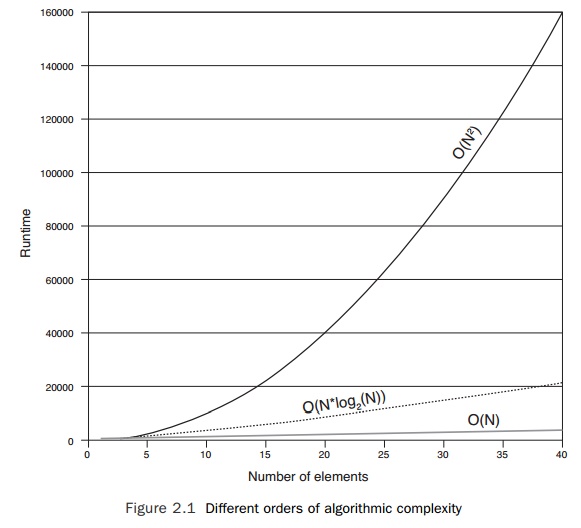Chapter: Multicore Application Programming For Windows, Linux, and Oracle Solaris : Coding for Performance
Why Algorithmic Complexity Is Important
Why
Algorithmic Complexity Is Important
Algorithmic complexity represents the expected performance of a section
of code as the number of elements being processed increases. In the limit, the
code with the greatest algorithmic complexity will dominate the runtime of the
application.
Assume that your application has two regions of
code, one that is O(N) and another that is O(N2). If you run a test workload of
100 elements, you may find that the O(N) code takes longer to execute, because
there may be more instructions associated with the computation on each element.
However, if you were to run a workload of 10,000 ele-ments, then the more complex
routine would start to show up as important, assuming it did not completely
dominate the runtime of the application.
Picking a small workload will mislead you as to
which parts of the code need to be optimized. You may have spent time
optimizing the algorithmically simpler part of the code, when the performance
of the application in a real-world situation will be domi-nated by the
algorithmically complex part of the code. This emphasizes why it is impor-tant
to select appropriate workloads for developing and testing the application.
Different parts of the application will scale differently as the workload size
changes, and regions that appear to take no time can suddenly become dominant.
Another important point to realize is that a change
of algorithm is one of the few things that can make an order of magnitude
difference to performance. If 80% of the application’s runtime was spent
sorting a 1,000-element array, then switching from a bubble sort to a quicksort
could make a 300× difference to the performance of that function, making the time spent
sorting 300× smaller than it previously was. The 80% of the runtime spent sorting
would largely disappear, and the application would end up running about five
times faster.
Table 2.1 shows the completion time of a task with
different algorithmic complexities as the number of elements grows. It is
assumed that the time to complete a single unit of work is 100ns. As the table
illustrates, it takes remarkably few elements for an O(N2) algorithm to start consuming
significant amounts of time.
Table 2.1 Execution
Duration at Different Algorithm Complexities

The same information can be presented as a chart of runtimes versus the
number of elements. Figure 2.1 makes the same point rather more dramatically.
It quickly becomes apparent that the runtime for an O(N2) algorithm will be far greater
than one that is linear or logarithmic with respect to the number of elements.

Related Topics